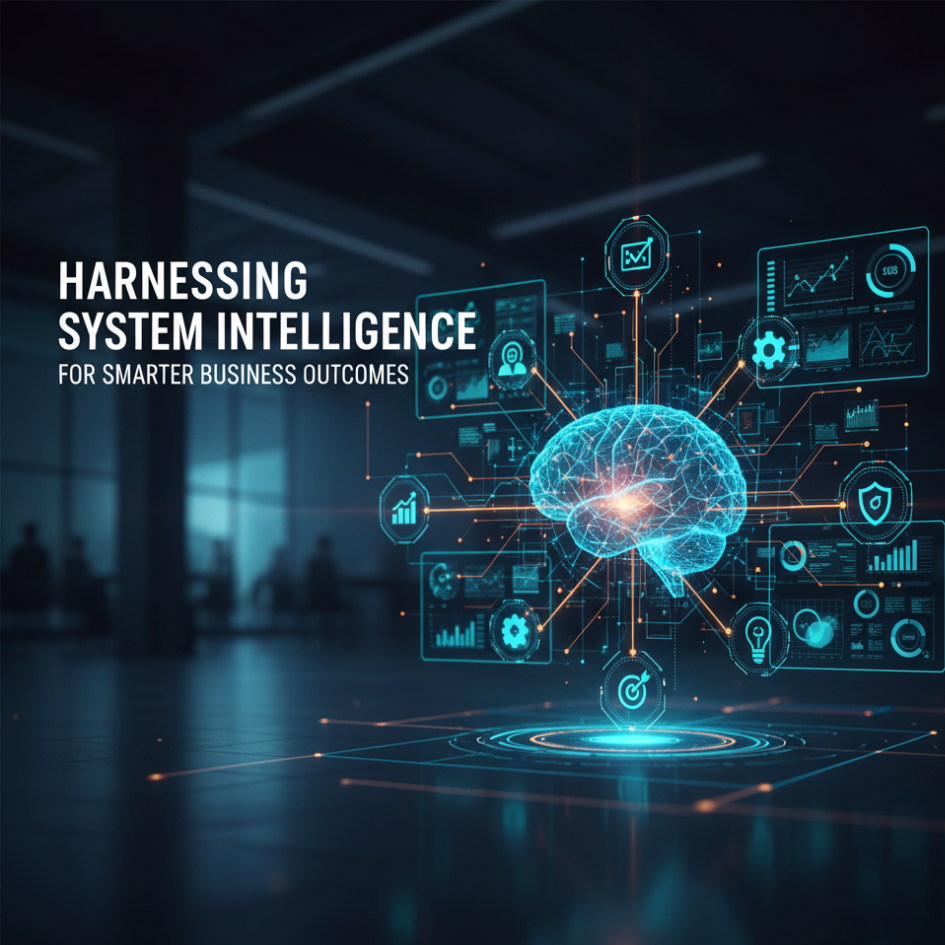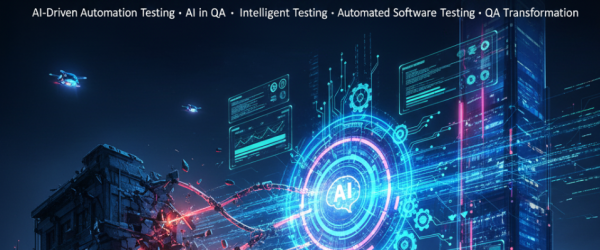Introduction
In the age of digital transformation, businesses are drowning in data but starving for insight. Modern enterprises generate a staggering amount of data—a single internet user can create over 140 megabytes of data every single second. This data deluge presents a paradox: immense growth potential, yet a significant risk of being overwhelmed. The sheer volume makes it nearly impossible for human teams alone to identify trends, predict failures, and make timely, informed decisions.
This is where system intelligence becomes the most valuable asset in a company’s arsenal. It’s the ability to move beyond basic data collection and use Artificial Intelligence (AI) and Machine Learning (ML) to process, analyze, and learn from a constant stream of information. This process transforms raw, chaotic data into a clear, actionable roadmap for smarter business outcomes. It’s the difference between merely seeing what happened and understanding what will happen next.
The Cost of Data Overload and Reactive Operations
For too long, businesses have operated in a reactive mode. When a system fails, IT teams scramble to find the root cause. When a customer churns, sales teams are left guessing why. This approach is not only inefficient but also financially devastating. Research indicates that 91% of U.S. organizations believe that poor data quality has a direct impact on revenue. The operational inefficiencies, missed opportunities, and poor decision-making that stem from this data chaos are immense.
Common challenges of traditional, reactive operations include:
- Siloed Data: Information is trapped in different departments and systems, preventing a holistic view.
- Alert Fatigue: IT and operations teams are inundated with an endless flood of alerts, many of which are false positives or low-priority, leading to critical warnings being missed.
- Slow Decision-Making: Without a centralized, intelligent system, decision-makers are forced to rely on fragmented reports and human intuition, leading to slower, riskier choices.
The Pillars of System Intelligence
System intelligence is not a single tool but an integrated ecosystem. It thrives on three core pillars of data, which AI unifies and enriches:
| Data Pillar | Description | AI’s Role in Enhancing It |
| Metrics | Numerical data points from systems (e.g., CPU utilization, latency, server load). | AI baselines normal behavior, automatically detecting anomalies and performance trends before they impact service. |
| Logs | Timestamps of events and operations within a system. | AI aggregates, correlates, and analyzes massive volumes of logs to find patterns and quickly pinpoint the root cause of an issue. |
| Traces | End-to-end views of a single request as it moves across a complex, distributed system. | AI maps complex service dependencies, identifying bottlenecks and failures within microservice architectures in real-time. |
Smarter Outcomes: Transforming Business with System Intelligence
Harnessing system intelligence directly translates to measurable business value. By moving from a reactive to a predictive model, organizations can achieve a range of smarter outcomes.
1. Proactive Problem Prevention
System intelligence uses predictive analytics to identify subtle precursors to a system failure. It can foresee a potential network outage by noticing a gradual degradation in performance or predict a hardware failure by analyzing usage patterns. This allows teams to intervene and resolve issues before they escalate, dramatically reducing unplanned downtime. A report from Bain & Company suggests that AI could double the time sellers spend on high-value activities by taking on administrative tasks .
2. Enhanced Operational Efficiency
AI-driven insights reduce the time spent on manual, repetitive tasks like sifting through logs or triaging alerts. This shift enables IT and operations teams to focus on strategic initiatives and innovation. A study by Accenture found that businesses adopting AI in their operations could reduce unplanned downtime by up to 30-40%.
3. Accelerated and Informed Decision-Making
With a unified view of all systems, decision-makers have access to real-time, actionable insights. This enables quicker and more confident business decisions, whether it’s scaling resources for a marketing campaign, optimizing a supply chain, or enhancing the customer experience.
4. Superior Customer Experience
In a survey, PwC found that 73% of customers point to experience as a key factor in their purchasing decisions. By ensuring always-on services, personalized interactions, and rapid issue resolution, system intelligence directly contributes to higher customer satisfaction, loyalty, and revenue.
The Future is Intelligent
The shift to harnessing system intelligence is not a temporary trend; it’s the next evolution of business. It enables a fundamental change in how companies operate, making them more resilient, efficient, and competitive. As IT environments become even more complex and data-driven, the organizations that will thrive are those that invest in turning their data overload into a source of clear, actionable intelligence.
This strategic approach will create a virtuous cycle where smarter decisions lead to better outcomes, which in turn generate even more valuable data for the system to learn from. The future of business is not about collecting data; it’s about making it work for you, intelligently.
Conclusion
Harnessing system intelligence is no longer a future-facing idea — it is an enterprise necessity. By combining decision modeling, automation, predictive analytics, and strong governance, organizations can accelerate decisions, reduce operational risk, and unlock measurable ROI.
As IT and business systems continue to grow more complex, companies that invest early in system intelligence will be better positioned to respond to disruptions, seize opportunities, and deliver seamless customer experiences. System intelligence transforms data from a passive asset into a driver of business outcomes — turning insight into action, at scale.







